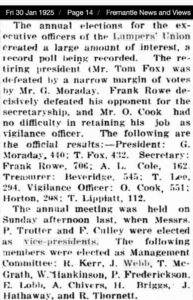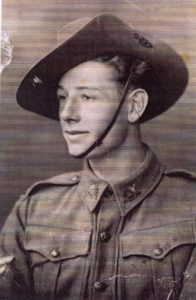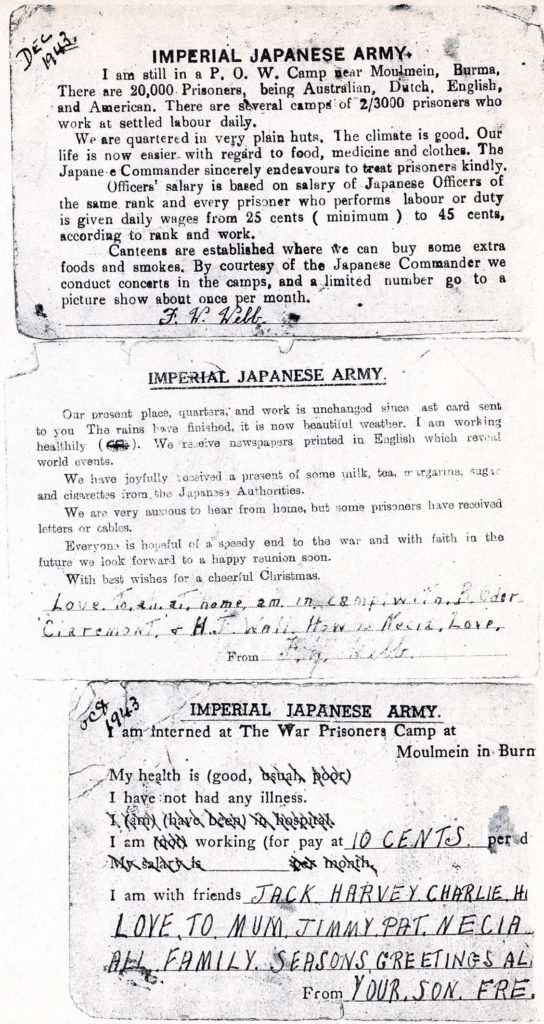The Soldier's Details

- Surname:
- Webb
- First Name:
- Frederick William
- Nick Name:
- Spider or Fred to his family
- Rank:
- Private
- Regimental #:
- WX9829
- Company:
- ‘C’ Company, 10 Platoon
- Enlisted:
- 6.12.1940
- DOB:
- 18.11.1921
- Place of Birth:
- Subiaco, Western Australia
- Father's Name:
- James Webb
- Mothers's Name:
- Doris Rae Webb (nee Moreton)
- Religion:
- Roman Catholic
- Pre-war Occupation:
- Hairdresser
- Memorial:
- Epitaph, Labuan Memorial, Panel 19, Age 22.
- Singapore:
- Selarang Camp Changi, River Valley Road Transit Camp
- Force:
- 'A' Force Burma, Green Force, No. 3 Battalion
- Camps Thailand:
- Tamarkan, Tamuang
- Camps Burma:
- Victoria Point, Tavoy, Ye, Thabuzyat, Kendau 4.8km, Thetkaw, Meiloe 75km, Augganaung, Saigon
- POW#:
- 2917
- Japan:
- Rakuyo Maru Party, Kumi No. 37
- Cause of Death:
- Lost at Sea
- Place of Death:
- South China Sea
- Date of Death:
- 12.09.1944
General Description
‘Spider’ enlisted AIF Dec 1940, later joining 2/4th’s ‘C’ Company’s 10 Platoon under Commanding Officers Lt. Wilson and Lt. Ambrose.
On board the ‘Aquitania’ when she anchored off Fremantle for one night of 15 January, 1942 on route from Sydney to Singapore Fred was one of 100s of 2/4th who jumped ship against orders. Fred swam 3 miles to shore, managed to see his mother and then swam 3 miles back to ‘Aquitania’.
About 90 well-trained machine gunners were left behind when Aquitania sailed the next day on 16th January. Several men lost their stripes! Please read further
These 90 men were later taken POWs of Japan in Java.
At Singapore Fred was initially on a gun with Bert Wall until forced to retreat.
In Bert Wall’s interview with Peter Winstanley, Bert several times mentions Fred’s name.
Please read Bert’s description and what happened at POW Camp 75 on Burma end of Railway.
Fred fought at Hill 200, Ulu Pandan where so many mates and 2/4th soldiers lost their lives. Webb and Pte Climie reported the death (at Changi after surrender) of ‘ Fitzie’ Fitzpatrick WX9039 KIA on 12 Feb 1942.
Please read further about Ulu Pandan.
Height 5′ 10″
Spider’s parents James Thomas Webb and Doris Rae Moreton married Bendigo 1908. The Webb family resided East Fremantle until James Webb died in 1941 after which Doris moved to Loch Street, Claremont. The Webb family grew to include 12 children, 6 girls and 6 boys. It was suggested by family members Fred was his mother’s favourite son!
James (Jim) Webb was a lumper employed at Fremantle wharves until he suffered a severe injury when a crane fell on him resulting in one leg being amputated just below his knee. Unable to work, Doris became the breadwinner and returned to the workforce.
Below: Jim Webb is elected to Management Committee of Fremantle Lumper’s Union 1925.

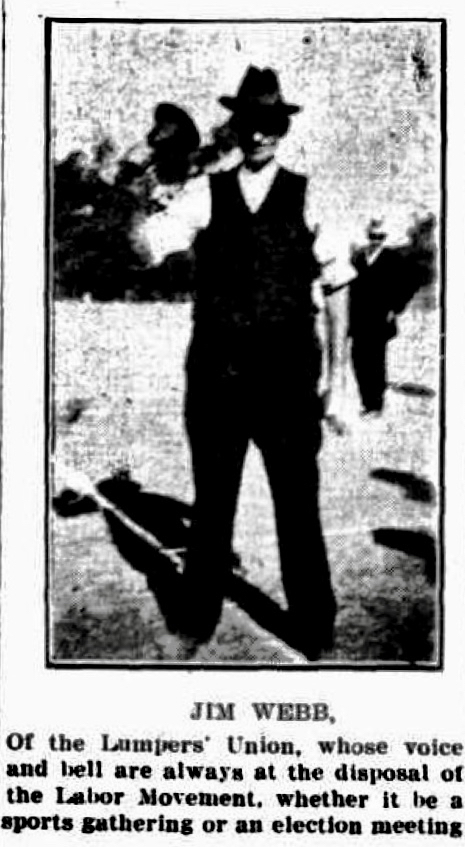
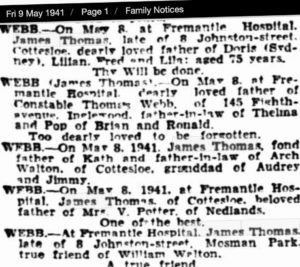
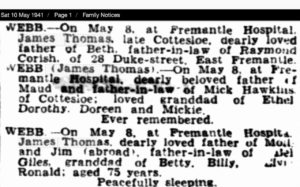

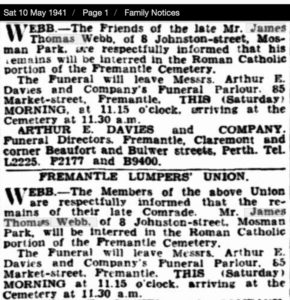
James Thomas died in 1941 at Fremantle and Doris in 1968.
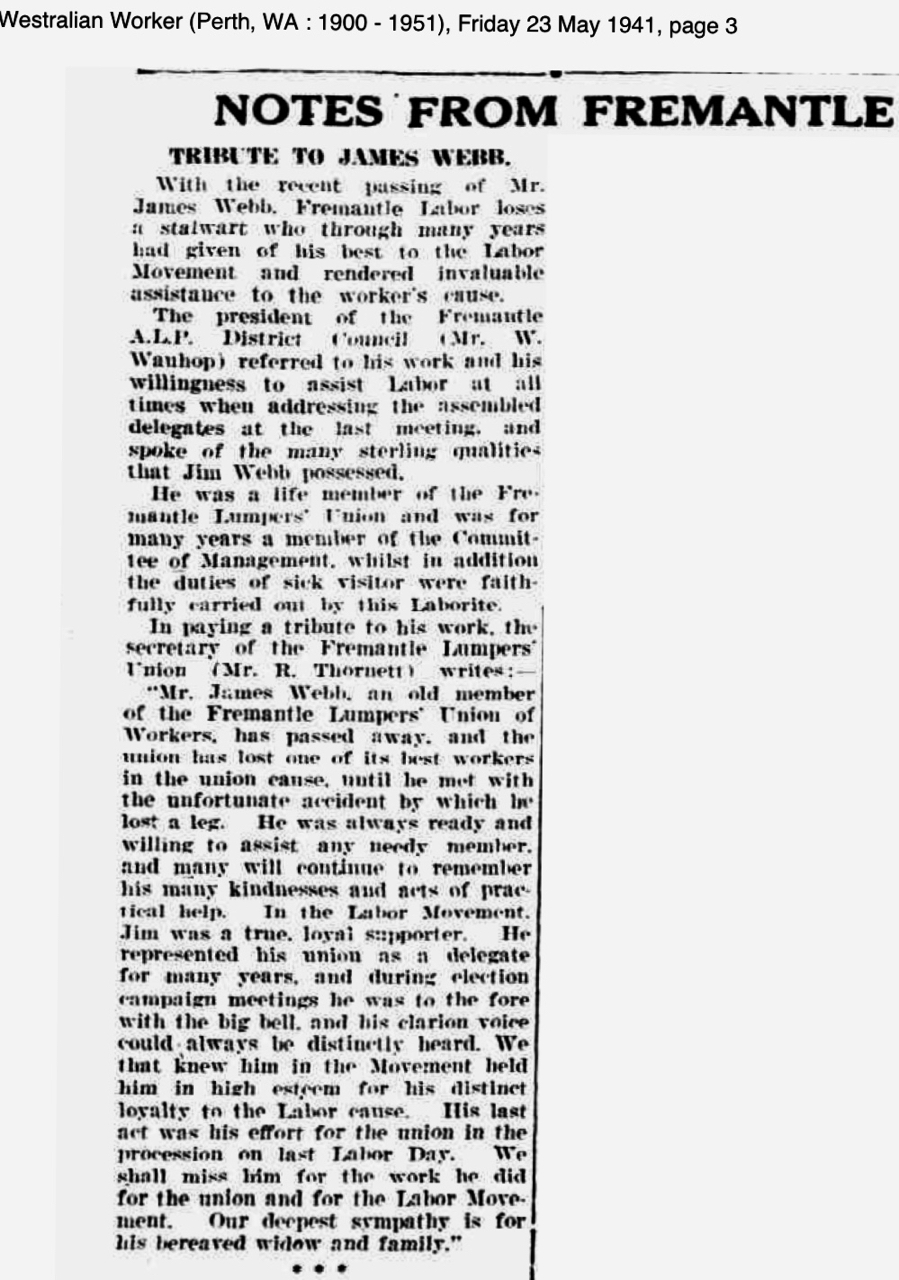
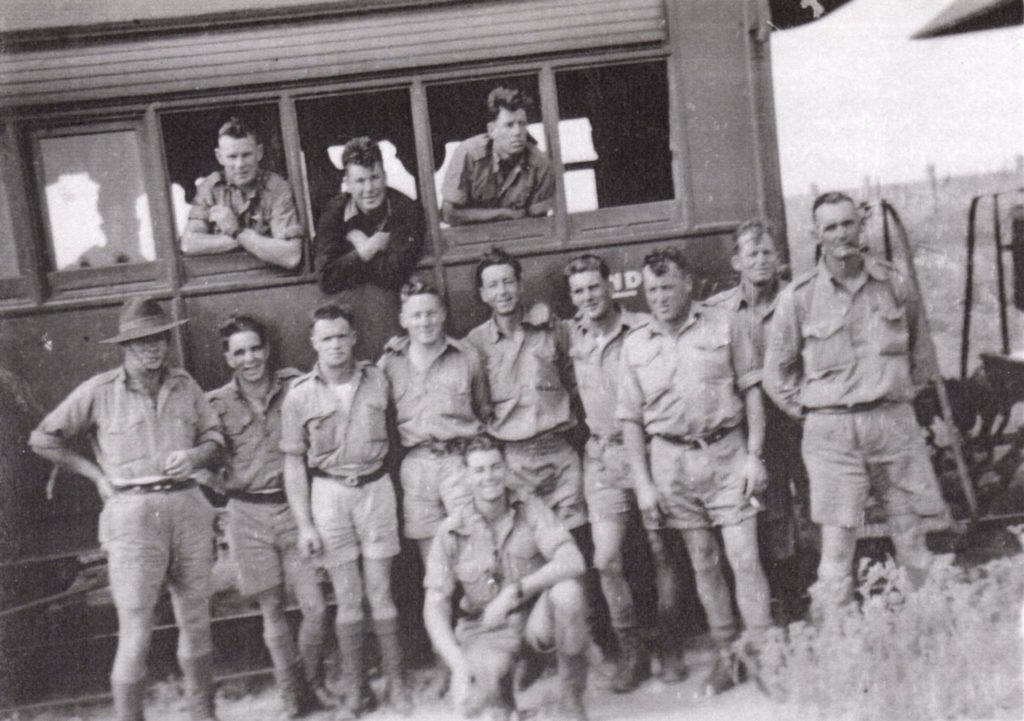
Rear L-R Kev Moir, Clarrie Henderson, Fred Webb
Front Taffy Jones, Cyril Anderson, Jock Leith, Chris Mc Lennan, Les Marriot, Ern Ricketts, Paddy Byrne. S Morris, Bert Fidge.
Kneeling Harry Norris
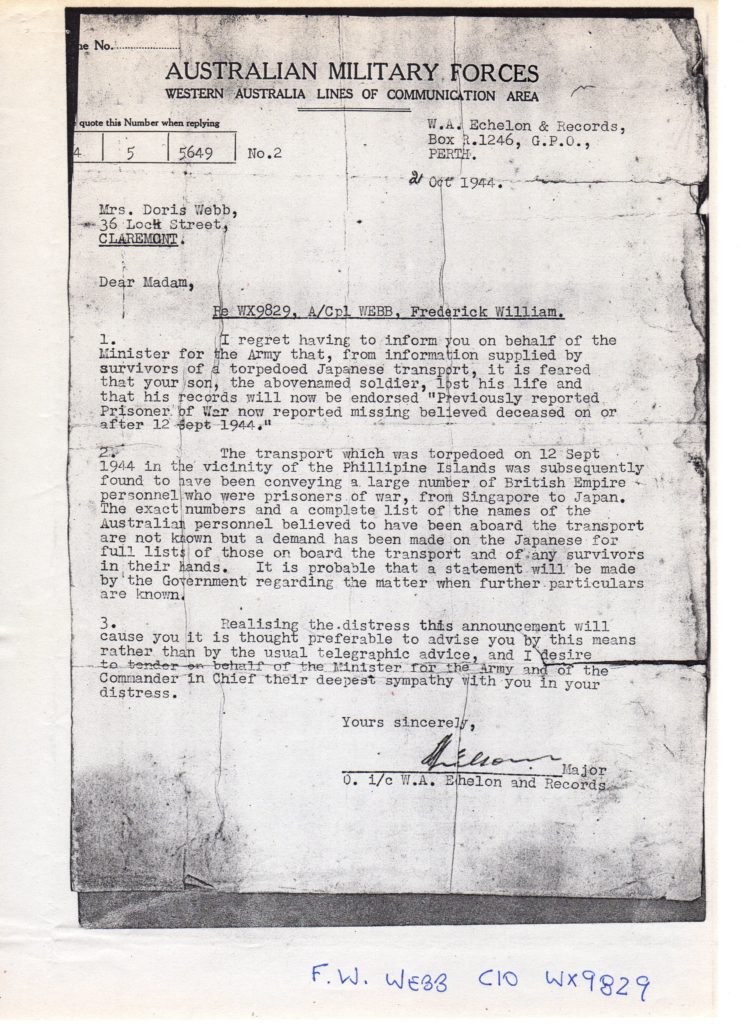
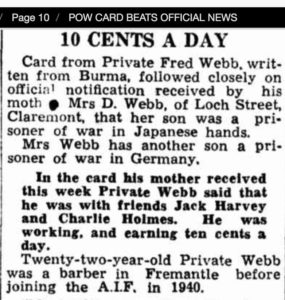
WEBB, Private, FREDERICK WILLIAM, WX9829, A.I.F. 2/4 M.G. Bn., Australian Infantry. 12 September 1944. Age 22. Son of Thomas and Doris Webb, of Claremont, Western Australia. Panel 19.
Labuan Memorial, Malaysia.
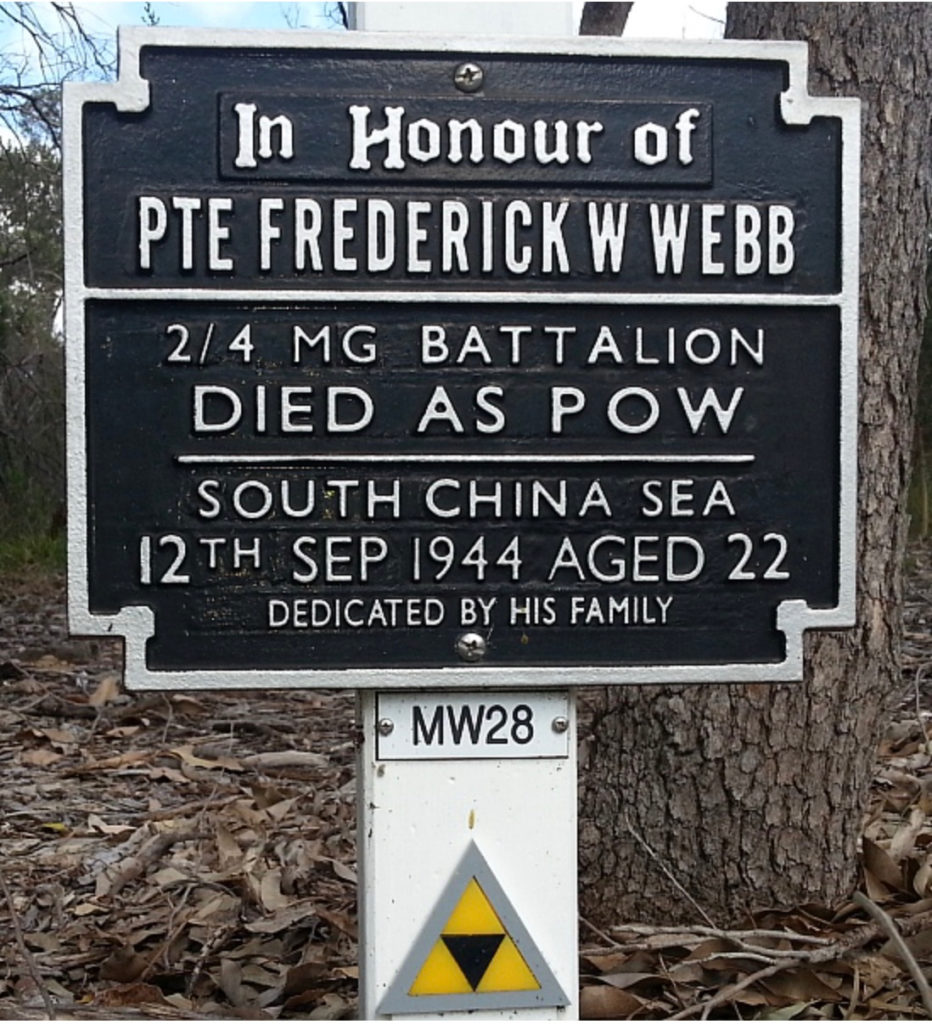
Dedicated by His Family on 22 November 2008
Biography presented during plaque dedication:
‘Private Frederick William Webb of 2/4 Machine Gun Battalion was born in Subiaco in November 1921 and was the seventh child in a family of twelve of Thomas and Doris Webb of Claremont.
He went to school at Christian Brothers College at Fremantle, which he enjoyed. When he left school he started training as a barber.
Les enjoyed his BSA motorbike and was part of a group that regularly rode to different locations around Perth, with Buckland Hill being one of the favourites.
He joined the militia in Claremont and later transferred to the Australian Imperial Forces after putting up his age. Les enlisted in December 1940 and was posted to the 2/4 Machine Gun Battalion which was raised with men from across Western Australia. They trained at Northam, moved to Adelaide then to Darwin before leaving for Singapore in December 1940.
After the fall of Singapore he was imprisoned at Changi then Burma. In early 1944, 900 of the fittest men were to be sent to Japan to provide labour there.
After being taken back to Singapore they sailed on the Rakuyo Maru in September 1944. Their officers protested that there were no red cross markings on the ship. On 12th September 1944 the Rakuyo Maru was torpedoed by the USS Sealion II.
Private Frederick Webb of 2/4 Machine Gun Battalion died as a prisoner of war in the South China Sea on 12 September 1944. He was 22.’
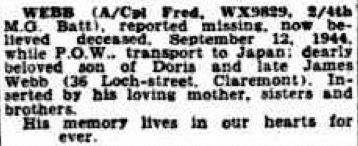
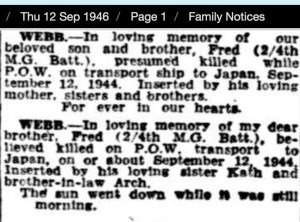
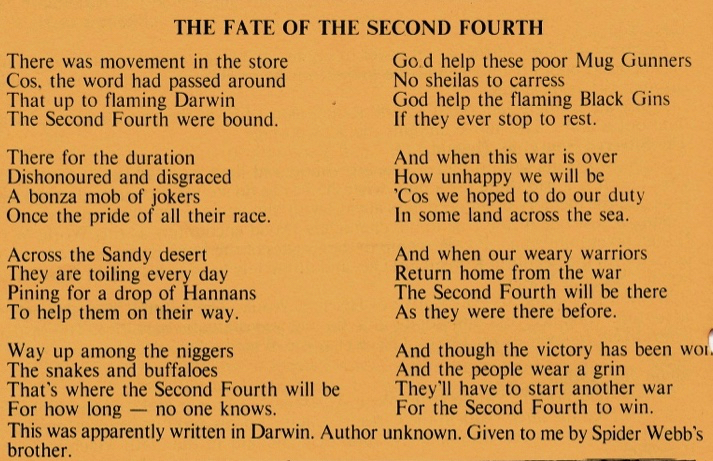
This poem was passed onto a Committee Member of 2/4th by Spider’s brother and printed in July 1990 Borehole Bulletin.
Spider was selected to work on Burma end of Railway with ‘A’ Force Burma, Green Force No. 3. Please read further.
This Force sailed from Singapore 14 May 1942 for the south west coast of Burma. 1,000 POWs under leadership of Major Charles Green of 2/4th disembarked at Victoria Point on 21 May 1942, where most of the men were engaged in repairing and enlarging the aerodrome, a smaller party remained at Victoria Point wharves unloading and loading supplies for Japanese, mostly fuel. They joined the larger group of Green Force and together the group eventually made their way to the northern most end of what was to be the Burma-Thai Railway. They commenced work at Thetkaw 3.8km Camp 1 October 1942 – the first Australians and first work group working on the Burma end of the rail link.
By the end of December 1943, the railway was completed and the Japanese commenced moving all POWs south to Thailand to one of 4 or 5 large camps – many sick POWs were hospitalised for months, Spider remained well (at least he is not recorded being sick in Burma) and was at Tamarkan. After several months with more food and rest he was considered fit to work in Japan and was selected with what would be known as ‘Rakuyo Maru’ party.
The were entrained for French Indo China via Bangkok and arrived at Saigon, and immediately began working in smaller work parties around Saigon while waiting for a ship to take them to Japan. Work locations included some airfields, hospitals and docks. It was never as taxing as working on the railway. It was at the wharves where Australian POWs excelled in thieving from the supplies they loaded and unloaded. As they had done in Singapore!
Please read the story of Dr. Rowley Richards, one of 42 Australian doctors on the Railway.
The POWs were eating well here.
The American submarines had successfully blockaded the seas around Saigon. The POWs endured several false starts to the wharves at Cape Saint Jacques where the Japanese convoys were staged to Japan. On the last occasion POWs had boarded a ship and remained over night before they were ordered the next morning “All men back to Saigon.” Finally the Japanese realised their plans required change – POWs headed for the rail link back through Bangkok and headed for Singapore where they would find a ship for Japan. At Singapore the POWs of ‘Rakuyo’ group were accommodated at River Valley Road Transit Camp where again they were set to work in smaller work parties around Singapore, including the wharves while waiting transport.
The POWs finally boarded ‘Rakuyo’ Maru early September 1944.
Fred lost his life when ‘Rakuyo’ Maru transporting him to Japan was hit by American submarines on 12 September, 1944 in the South China Sea.
Rowley Richards was one of the lucky few-he was picked up by a Japanese naval ship and eventually taken to Japan.
You may like to ready Bert Wall’s recollections of his Servcie, he mentions Feddy Webb.
Please read about ‘Rakuyo’ Maru.
2019 was 75th Anniversary of the sinking of ‘Rakuyo’ Maru.
Read about the other 2/4th men who lost their lives when Rakuyo sank
__________
After the end of war, Fred’s close mate, country boy Bert Wall from 2/4th who miraculously survived in the ocean long enough after ‘Rakuyo’ Maru sank on 12 Sept 1944 to be recovered by a Japanese naval vessel – taken to Japan to work – visited Mrs Webb and family. Bert was a country boy and he with several 2/4th boys from the country, were regularly invited to the Webb family home for weekends by Fred to enjoy the hospitality of the large Webb family.
The Webb family knew very little of Fred’s life as a POW and why he was even on ‘Rakuyo’ Maru.
Bert had not known what happened to Fred once ‘Rakuyo’ Maru began sinking. With so many POWs jumping from the ship to so-called safety of the ocean – Bert lost contact with Fred. However Bert was able to tell Mrs Webb some happier and ‘fun stories’ of being a POW and Fred’s life working on the Burma-Thai Railway. Being a hairdresser ‘Spider’ was able to earn valuable extra income from cutting the hair of Japanese guards. Not only did the guards pay with cigarettes or other ‘trading’ items, Fred was able to scrounge food scraps for his mates. The POWs existed day to day in a constant state of starvation, their thoughts mainly centred around food! What they would eat when they were again free, what they could scrounge now, today and/or tomorrow!
There was no point considering escape – not in the dense jungle in remote locations – capture entailed a horrible death by the Japanese.
When the telegram arrived in 1945 for Doris, advising her of her of Fred’s death, she fainted, falling to the floor in shock and grief. Her family say Doris never really recovered her spirit and was so broken by the news of Fred’s death.

Fred’s younger sister Jeanne Shaylor (nee Webb) – who shared stories of her childhood and love for Fred, her older and charming brother.
Jeanne relayed the story of Fred cutting her hair and then shaving her scalp (on their mother’s instructions) – when Jeanne was about 12 years old. This would supposedly strengthen and thicken her wispy and super fine hair! Poor Jeanne had to wear a beanie to school. And her hair never changed!
Fred would bring home his country mates for weekends away from Northam, young Jeanne would ‘hang about’ listening, high jinxing with the boys and probably being a nuisance at times!
She remembers fondly the day the entire Webb family travelled to Fremantle wharves to say goodbye to Fred when he departed with 2/4th for South Australia. Fred’s last words to young Jeanne were “Look after Mum and behave yourself Luvvy!”
Camp Locations:
- River Valley Road Camp - Singapore
- Selarang Camp Changi - Singapore
- Tamarkan, Tha Makham 56k - Thailand
- Aungganaung,105Kilo - Burma
- Kendau, Kandaw, 4 Kilo - Burma
- Meilo, 75 Kilo, 340k - Burma
- Tavoy (Dawei) - river port - Burma
- Thanbyuzayat, 415k - Burma
- Ye - Burma
- Saigon - French Indo China
- Victoria Point, Kawthoung - Burma. \'A\' Force, Green Force No. 3 Btn
- Thetkaw 14 Kilo - Burma

